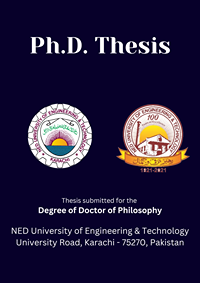Universal Framework for Open Source Software OSS Adoption (PhD Thesis)
Material type: TextLanguage: English Publication details: Karachi : NED University of Engineering and Technology Department of Computer Science and Information Technology, 2021Description: v p : illSubject(s): DDC classification:
TextLanguage: English Publication details: Karachi : NED University of Engineering and Technology Department of Computer Science and Information Technology, 2021Description: v p : illSubject(s): DDC classification: - 005.300378242 UMM
| Item type | Current library | Shelving location | Call number | Status | Date due | Barcode |
|---|---|---|---|---|---|---|
 Reference Collection
Reference Collection
|
Reference Section | Reference Section | 005.300378242 UMM | Available | 98684 | |
 Reference Collection
Reference Collection
|
Reference Section | Reference Section | 005.300378242 UMM | Available | 98685 |
Abstract :
In the past, proprietary/closed source software (CSS) was the only possible option accessible to home users and professionals. OSS (Open Source Software) has a profound impact on Information Technology. OSS adoption has been rising around the world. It has been observed via extensive research that there are substantial factors associated with OSS that thwart the wide adoption of OSS, specially in the domain of mission-critical software. Any country’s critical infrastructure is its foundation. The economy, defense, and health of every country are all dependent on critical infrastructure. In order to run day-to-day jobs effectively and adequately, critical IT infrastructure needs mission-critical applications. It has been observed that critical-sector organizations are operating with proprietary software and are willing to adopt Open Source Software (OSS). Mission-critical IT systems are utilizing proprietary/CSS mainly due to reasons related to "quality assurance" and "continued support" despite much better benefits of using Open Source Software (OSS). OSS permits users to access source code for assessment, amendment, and redistribution, which offers a low dependency on a vendor as well without a license or maintenance cost. This thesis investigates and analyzes OSS adoption factors for "critical IT infrastructure" by conducting a comprehensive review of the relevant literature and proposes/validates a framework that can help the critical IT industry to have increased confidence in OSS.
Research on the adoption of IT innovations has frequently drawn on innovation adoption theory. However, with time some weaknesses have been identified in theory. and it is realized that the factors affecting the adoption of OSS vary from company to company and mainly depend upon certain environmental factors. The proposed framework utilizes the organizing logic of the Technology, Organization, and Environment (TOE) framework. recommends factors that wore recognized by critically scrutinizing the studies found in the available literature. This research incorporated a survey targeting IT experts of the critical sectors to identify factors affecting OSS adoption within critical-sector organizations. Data were obtained from 150 IT experts in Pakistan using a cross-sectional survey process. The data integrity of survey results was analyzed using Cronbach's alpha (0.89). Following data screening. structural equation modeling (SEM) focused on partial least squares was used to investigate hypothetical relationships for a mission-critical OSS (open source software) adoption model. A two-stage repeated indicator approach was used to test the higher-order formative-formative model, which includes eight primary mission-critical OSS adoption constructs and three second-order (Technological, Organization and Environmental). The empirical findings show that the absence of multicollinearity also nomological validity was affirmed. This research provides sufficient opportunities for organizations in critical industries to learn more about the weight and relevance of each component of the mission-critical OSS adoption model. Q₂ value showed good predictive significance with (0.987). Q₂ is used to test the predictive viability (or relevance) of each latent variable in the proposed theoretical model. All path relationships in the model are significant at the 0.05 level. Therefore Technological factors, Organizational factors, Environmental factors and adoption have a relatively positive relationship. Finally, restrictions and implications for theory and implementation are devised based on the results.
